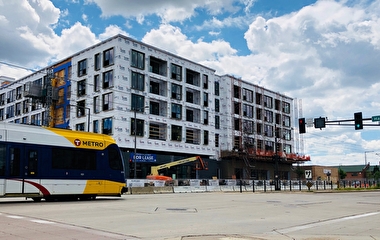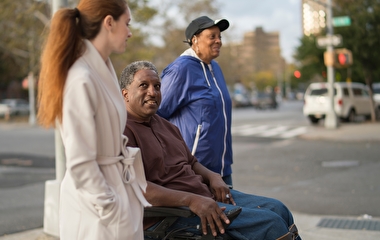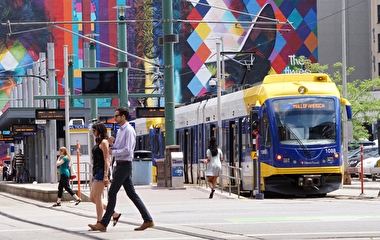not able to drive.
Momentum for self-driving vehicles (SDVs) is on the upswing this year in Minnesota, including a demonstration on the U of M Twin Cities campus (see related article) and the formation of a governor’s advisory council. Researchers in the U’s Transportation Policy and Economic Competitiveness (TPEC) Program have also been active, focusing on the important issue of equity in the development and implementation of SDVs.
“We’ve taken the message of our SDV Task Force on the road during the past year,” says Adeel Lari, research fellow at the Humphrey School of Public Affairs and a TPEC researcher. “We’re hearing valuable feedback from colleagues, local politicians, and communities throughout Greater Minnesota.”
The task force was formed in the spring of 2017. Its intent was to identify how various SDV deployment strategies could improve mobility and access for transportation-dependent Minnesotans: seniors, people with disabilities, and others who are not able to drive themselves.
Among the conclusions of the task force is that deployment models would likely vary across the state. “For example, we found that simple policy incentives could lead the private market to provide a variety of innovative services in urban areas,” says Frank Douma, director of the State and Local Policy Program at the Humphrey School and a TPEC researcher. “However, government intervention would likely be needed to ensure significant enhancements to transportation in small towns and rural areas.”
As follow-up to the task force, TPEC initiated a number of public engagement sessions. In Grand Rapids, Minnesota, the researchers held two meetings with representatives from foundations and public agencies, people with disabilities, and others. “We found the participants to be very interested in the subject,” Lari says. “They wanted to know how self-driving vehicles can be used to improve transit. They also wanted to know what the implementation of driverless vehicle technology could or would look like in the community.”
One of the participants was former teacher Myrna Peterson, co-director of Mobility Mania, a Grand Rapids nonprofit. Peterson, who has used a wheelchair since she was seriously injured in a 1995 car crash, is an advocate for more accessible transportation in her community. She also served on the SDV Task Force.
“We have very limited affordable, accessible transportation after 8 p.m. on weekdays and all weekend hours in rural areas,” Peterson said. “That limits social and work opportunities for those with physical, mental, and financial needs. I see self-driving vehicles as a positive step to assist that population especially. The key stakeholders in Grand Rapids are all supportive and excited about the potential of being a pilot site.”
This year, TPEC researchers engaged the Region 9 Board of Directors and other local groups in Mankato and met with Saint Cloud’s area planning organization. An additional presentation is planned for July in Fergus Falls to the West Central Initiative (a foundation and regional development organization).
Douma and Lari will use the findings of these sessions to help better articulate the best methods for deploying these technologies in different parts of the state.
TPEC will continue this work later this year by starting a similar initiative in transportation-disadvantaged urban areas, Lari adds.
TPEC is a program of the Humphrey School and CTS.



